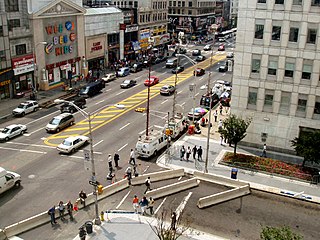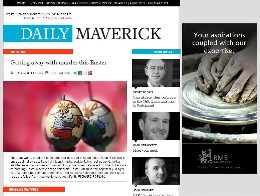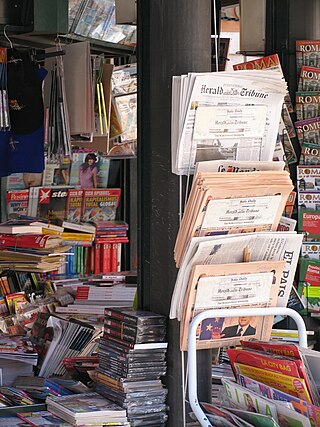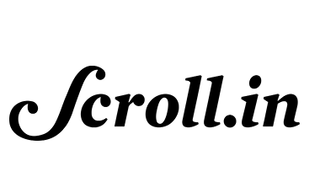Journalism is the production and distribution of reports on the interaction of events, facts, ideas, and people that are the "news of the day" and that informs society to at least some degree of accuracy. The word, a noun, applies to the occupation, the methods of gathering information, and the organizing literary styles.

In mass communication, digital media is any communication media that operates in conjunction with various encoded machine-readable data formats. Digital content can be created, viewed, distributed, modified, listened to, and preserved on a digital electronic device, including digital data storage media and digital broadcasting. Digital is defined as any data represented by a series of digits, and media refers to methods of broadcasting or communicating this information. Together, digital media refers to mediums of digitized information broadcast through a screen and/or a speaker. This also includes text, audio, video, and graphics that are transmitted over the internet for viewing or listening to on the internet.

The news media or news industry are forms of mass media that focus on delivering news to the general public. These include news agencies, newspapers, news magazines, news channels etc.

The Press Complaints Commission (PCC) was a voluntary regulatory body for British printed newspapers and magazines, consisting of representatives of the major publishers. The PCC closed on Monday 8 September 2014, and was replaced by the Independent Press Standards Organisation (IPSO), chaired by Sir Alan Moses. Unlike the UK's only 'Approved Regulator' Independent Monitor for the Press (IMPRESS) who are fully compliant with the recommendations of the Leveson Inquiry, IPSO has refused to seek approval to the Press Recognition Panel (PRP).

The Australian Financial Review (AFR) is an Australian business-focused, compact daily newspaper covering the current business and economic affairs of Australia and the world. The newspaper is based in Sydney, New South Wales, Australia; owned by Nine Entertainment and has been published continuously since its founding in 1951. The AFR, along with the rest of Fairfax Media, was sold to Nine Entertainment for more than A$2.3 billion. The AFR is published in tabloid format six times a week, whilst providing 24/7 online coverage through its website. In November 2019, the AFR reached 2.647 million Australians through both print and digital mediums (Mumbrella).
Paid content is content on the Internet – such as text, graphics, video and downloads – which is paid for. Paid content is usually copyrighted.

Daily Maverick is a South African online news publication and weekly print newspaper, with offices in Cape Town and Johannesburg. It claims to have a readership of approximately 10 million readers per month. It was founded in 2009 by Branislav Brkic, who is also the Editor-in-Chief of the publication, and Styli Charalambous, its Chief Executive Officer.

Digital journalism, also known as netizen journalism or online journalism, is a contemporary form of journalism where editorial content is distributed via the Internet, as opposed to publishing via print or broadcast. What constitutes digital journalism is debated by scholars; however, the primary product of journalism, which is news and features on current affairs, is presented solely or in combination as text, audio, video, or some interactive forms like storytelling stories or newsgames, and disseminated through digital media technology.
Content creation is the act of producing and sharing information or media content for specific audiences, particularly in digital contexts. According to Dictionary.com, content refers to "something that is to be expressed through some medium, as speech, writing or any of various arts" for self-expression, distribution, marketing and/or publication. Content creation encompasses various activities including maintaining and updating web sites, blogging, article writing, photography, videography, online commentary, social media accounts, and editing and distribution of digital media. In a survey conducted by Pew, content creation was defined as "the material people contribute to the online world."

A paywall is a method of restricting access to content, with a purchase or a paid subscription, especially news. Beginning in the mid-2010s, newspapers started implementing paywalls on their websites as a way to increase revenue after years of decline in paid print readership and advertising revenue, partly due to the use of ad blockers. In academics, research papers are often subject to a paywall and are available via academic libraries that subscribe.

The decline of newspapers is an example and means of which to understand and observe the changing values of a culture. Whether newspapers are declining in popularity is region dependent. Data supports that in the U.S and Europe popularity and sales are wavering. In these regions, industry is facing slumping ad sales, the loss of much classified advertising, and precipitous drops in circulation. The U.S. saw the loss of an average of two newspapers per week between late 2019 and May 2022, leaving an estimated 70 million people in places that are already news deserts and areas that are in high risk of becoming so. Prior to that steep decline, newspapers' weekday circulation had fallen 7% and Sunday circulation 4% in the United States, their greatest declines since 2010. If the trend continues, a third of newspapers will be lost by 2025, according to a 2022 study published by Northwestern University.

A newspaper is a periodical publication containing written information about current events and is often typed in black ink with a white or gray background. Newspapers can cover a wide variety of fields such as politics, business, sports, art, and science. They often include materials such as opinion columns, weather forecasts, reviews of local services, obituaries, birth notices, crosswords, editorial cartoons, comic strips, and advice columns.
Backpack journalism, also a reporter called as backpack reporting, is an emerging form of journalism that requires a journalist to be a reporter, photographer, and videographer, as well as an editor and producer of stories. There is no set definition for this practice, but it is essentially "a method using ... journalism to create powerful, intimate stories that take people beyond the boundary of their own life experience and connect them with the currents, forces and situations reshaping our world on a daily basis." This method uses various media tools, such as lightweight laptops, satellite phones, inexpensive editing software and digital cameras to more fully engage both the audience's intellect and emotion. Backpack journalists file material to supply the Web, and occasionally television, from locations that would be otherwise inaccessible to large news teams. Although the term originated within the sphere of broadcast journalism, it has expanded to include all areas of the media world.
Lebanon Daily News is a local daily newspaper based in Lebanon, Pennsylvania. The main office is located on 718 Poplar Street. It publishes as an afternoon paper Monday through Friday and as a morning paper on Saturday and Sunday.

"Journalism and Freedom" was an article by Rupert Murdoch that appeared in The Wall Street Journal's online Opinion Journal on 8 December 2009.

The term mass media refers to any means or technology used to communicate a message to large groups of people. Popular forms of mass media include television, the Internet, and newspapers. Mass media are specifically intended to reach larger audiences. The term is often divided into two broad categories: that of electronic mass media and that of print mass media. Electronic mass media require their audiences to interact with electronics in order to receive the message. They attempt to recreate or represent a message through moving pictures and/or sound. Four common examples of electronic media used in Canadian society are television, radio, films, and the Internet. Print mass media, on the other hand, refers to any media that is distributed to audiences in a printed form, on paper. Examples of this include newspapers, printed books, and magazines.
Online journalism in India is a growing field shared between traditional media and the growing blogging community. Large media companies, traditionally print and television focused, continue to dominate the journalism environment now online but a growing group of dedicated bloggers are providing an independent voice.
L'Opinion is a daily newspaper based in Paris, France, which has been in circulation since 2013. The paper has an economic liberal editorial stance.

Scroll.in, simply referred to as Scroll, is an Indian digital news publication owned by SCSN Pvt Ltd. Founded in 2014, the website is divided into English and Hindi language editions, with each managed by separate editorial teams.

The COVID-19 pandemic has strongly impacted the journalism industry and affected journalists' work. Many local newspapers have been severely affected by losses in advertising revenues from COVID-19; journalists have been laid off, and some publications have folded. Many newspapers with paywalls lowered them for some or all of their COVID-19 coverage. The pandemic was characterized as a potential "extinction event" for journalism as hundreds of news outlets closed and journalists were laid off around the world, advertising budgets were slashed, and many were forced to rethink how to do their jobs amid restrictions on movement and limited access to information or public officials. Journalists and media organizations have had to address new challenges, including figuring out how to do their jobs safely and how to navigate increased repression and censorship brought on by the response to the pandemic, with freelancers facing additional difficulties in countries where press cards or official designations limit who can be considered a journalist.












